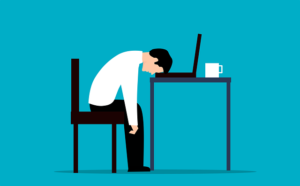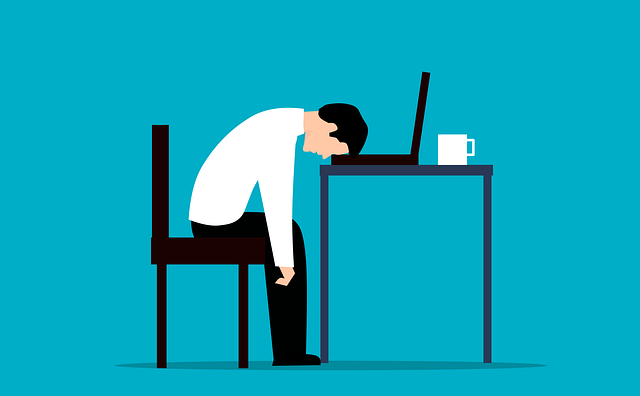How to be stress free : 5 Powerful Practices for Effortless Calm
How to be stress free, In the fast-paced, constantly connected world we live in, stress has become an unwelcome companion for many. The relentless demands of work, family, and personal commitments can leave us feeling overwhelmed, anxious, and drained. However, prolonged exposure to stress can have detrimental effects on our physical and mental well-being, leading to a range of health issues and diminished quality of life.

How to be stress free : 5 Powerful Practices for Effortless Calm
The good news is that stress is not an unavoidable reality. By adopting effective strategies and cultivating a mindset focused on serenity, we can regain control and experience the peace and tranquility that we all deserve. This comprehensive guide will provide you with practical tools, insights, and actionable steps to help you overcome stress and embrace a life of calm and contentment.
Understanding the Nature of Stress
Stress is a natural response to perceived threats or challenges, triggering a cascade of physiological and psychological reactions designed to help us cope. However, in our modern world, we often face chronic stressors that keep our bodies and minds in a constant state of heightened arousal, leading to a wide range of negative consequences.
Chronic stress can weaken our immune system, disrupt our sleep patterns, contribute to anxiety and depression, and increase the risk of developing various health conditions, such as heart disease, obesity, and digestive issues. It can also impair our cognitive abilities, making it difficult to concentrate, make decisions, and manage our emotions effectively.

1. How to be stress free : Recognizing the Signs of Stress
The first step in managing stress is to become aware of the signs and symptoms that indicate you are experiencing excessive levels of stress. These signs can be physical, emotional, cognitive, or behavioral, and may include:
Physical Signs: Headaches, muscle tension, fatigue, digestive problems, and sleep disturbances.
Emotional Signs: Irritability, anxiety, mood swings, and feelings of overwhelm or inability to cope.
Cognitive Signs: Difficulty concentrating, memory problems, and negative or racing thoughts.
Behavioral Signs: Changes in appetite, procrastination, social withdrawal, and increased use of substances (e.g., alcohol, drugs, or nicotine).
By recognizing these signs early on, you can take proactive steps to address the underlying causes of stress and prevent them from escalating into more serious health issues.
2. How to be stress free : Cultivating a Stress-Resilient Mindset
While external factors contribute to our stress levels, our mindset plays a crucial role in how we perceive and respond to stressors. By cultivating a stress-resilient mindset, we can develop the mental fortitude and coping strategies necessary to navigate life’s challenges with greater ease and equanimity.
Practice Mindfulness: Mindfulness techniques, such as meditation, deep breathing exercises, and present-moment awareness, can help you stay grounded, reduce reactivity, and respond to stressors with greater clarity and composure.
Embrace Positive Self-Talk: Replace negative self-talk and limiting beliefs with positive affirmations and self-compassion. Remind yourself of your strengths, capabilities, and the temporary nature of challenges.
Reframe Your Perspective: Instead of viewing challenges as insurmountable obstacles, reframe them as opportunities for growth, learning, and personal development. Adopt a growth mindset and focus on solutions rather than problems.
Cultivate Gratitude: Regularly practicing gratitude can shift your focus from what’s lacking to appreciating the abundance in your life, fostering a more positive and resilient outlook.
By nurturing a stress-resilient mindset, you can develop the inner resources and mental fortitude to navigate life’s challenges with greater ease and equanimity, reducing the impact of stress on your overall well-being.

3. How to be stress free : Lifestyle Strategies for Stress Management
While mindset plays a crucial role, adopting healthier lifestyle habits can also significantly reduce stress levels and enhance your overall well-being. Here are some effective strategies to incorporate into your daily routine:
Prioritize Self-Care: Make time for activities that nourish your body, mind, and soul, such as exercise, healthy eating, adequate sleep, and engaging in hobbies or leisure activities you enjoy.
Establish Boundaries: Learn to say “no” to demands that exceed your capacity or compromise your well-being. Set clear boundaries around your time, energy, and commitments, and respect the boundaries of others.
Simplify and Declutter: Embrace minimalism by reducing clutter, streamlining your possessions, and simplifying your schedule. A decluttered environment and streamlined routine can promote a sense of calm and control.
Foster Supportive Relationships: Nurture supportive relationships with family, friends, or communities that offer a sense of belonging, understanding, and encouragement. Strong social connections can serve as a buffer against stress.
Embrace Nature: Spend time in nature, whether it’s taking a walk in the park, gardening, or simply appreciating the beauty of the outdoors. Nature has a calming and restorative effect on our minds and bodies.
By incorporating these lifestyle strategies into your daily routine, you can create a solid foundation for stress management, enabling you to navigate life’s challenges with greater resilience and a sense of balance.
4. How to be stress free : Stress-Busting Techniques and Practices
In addition to cultivating a stress-resilient mindset and adopting healthy lifestyle habits, there are specific techniques and practices that can help you effectively manage and reduce stress in the moment. Here are some powerful tools to add to your stress-busting arsenal:
Deep Breathing Exercises: Consciously taking slow, deep breaths can activate the body’s relaxation response, lowering heart rate, blood pressure, and muscle tension. Try techniques like diaphragmatic breathing, 4-7-8 breathing, or alternate nostril breathing.
Progressive Muscle Relaxation (PMR): This technique involves systematically tensing and releasing different muscle groups, promoting a deep state of relaxation and relieving physical tension.
Guided Imagery and Visualization: Engage your senses by visualizing peaceful, calming scenes or scenarios, allowing your mind and body to experience a sense of tranquility and stress relief.
Journaling and Expressive Writing: Putting your thoughts and feelings into words through journaling or expressive writing can help process and release emotions, promoting clarity and a sense of control.
Physical Activity and Exercise: Engaging in regular physical activity can serve as a powerful stress-buster by releasing endorphins, boosting mood, and providing a healthy outlet for pent-up tension and energy.
By incorporating these techniques and practices into your daily routine or utilizing them when faced with stressful situations, you can effectively manage and reduce stress levels, promoting a greater sense of calm and well-being.

5. How to be stress free : Creating a Stress-Free Environment
While personal practices and techniques are essential, creating a stress-free environment can also play a significant role in reducing stress levels and promoting overall well-being. Here are some strategies to consider:
Declutter and Organize Your Space: A cluttered and disorganized environment can contribute to feelings of overwhelm and anxiety. Take the time to declutter, organize, and create a serene and functional living or working space.
Incorporate Calming Elements: Surround yourself with elements that promote relaxation and tranquility, such as soft lighting, soothing colors, and plants or natural elements that bring a sense of peace and connection to nature.
Minimize Distractions and Noise: Identify and eliminate sources of unnecessary distractions and noise, whether it’s from electronic devices, background noise, or external stimuli. Create designated quiet spaces or zones for focused work or relaxation.
Foster Positive Energy: Cultivate a positive and uplifting atmosphere by displaying inspiring quotes, artwork, or images that resonate with you and remind you of your values, goals, or sources of joy and inspiration.
Establish Boundaries and Routines: Set clear boundaries and routines around work, family, and personal time to create a sense of structure and balance. Establish designated times for focused work, relaxation, and disconnecting from digital devices or external demands.
By creating a stress-free environment that aligns with your needs and preferences, you can foster a sense of calm, control, and overall well-being, reducing the impact of external stressors on your daily life.


6. How to be stress free : Seeking Professional Support
While many stress management strategies can be implemented on your own, seeking professional support can be invaluable, especially when dealing with severe or persistent stress, anxiety, or related mental health concerns. Here are some options to consider:
Counseling or Therapy: Working with a licensed therapist or counselor can provide a safe and supportive space to explore the root causes of your stress, develop coping strategies, and gain valuable tools for managing stress and promoting overall well-being.
Stress Management Programs: Many healthcare facilities, community centers, or wellness organizations offer structured stress management programs or workshops designed to teach practical techniques and strategies for reducing stress and enhancing resilience.
Support Groups: Joining a support group can provide a sense of community, shared understanding, and valuable peer support, as well as opportunities to learn from others’ experiences and coping strategies.
Online Resources and Telehealth: In addition to in-person support, there are numerous online resources, apps, and telehealth services available that offer virtual access to stress management education, guided practices, and professional support.
Remember, seeking professional support is a proactive step towards prioritizing your well-being and should be viewed as a sign of strength, not weakness. By taking advantage of these resources, you can gain valuable insights, tools, and guidance tailored to your specific needs and circumstances.

Watch the video : How to be stress free
Conclusion
Stress is an inevitable part of life, but it doesn’t have to control or diminish the quality of your existence. By embracing the strategies and techniques outlined in this comprehensive guide, you can cultivate a stress-resilient mindset, adopt healthier lifestyle habits, and equip yourself with powerful tools to effectively manage and reduce stress.
Remember, the journey towards a stress-free life is an ongoing process that requires patience, commitment, and a willingness to explore and adapt as needed. Celebrate small victories, practice self-compassion, and remain open to seeking support when needed.
By prioritizing your well-being and embracing a life of serenity, you can unlock a world of improved physical and mental health, heightened productivity, deeper connections, and a greater sense of joy and fulfillment in all aspects of your life. Embrace the path to a stress-free existence, and experience the profound transformative power of living in harmony with yourself and the world around you.
FAQs
1. Is it possible to completely eliminate stress from life?
While it may not be realistic to completely eliminate stress, as it is a natural part of life, it is possible to significantly reduce and manage stress levels through effective strategies and techniques. The goal is to develop a healthy relationship with stress and cultivate the resilience and coping mechanisms to navigate challenges with greater ease and equanimity.
2. Can stress ever be beneficial?
In moderate amounts, stress can actually be beneficial as it can motivate us, enhance our performance, and help us respond to challenges or threats. However, chronic or excessive stress can have detrimental effects on our physical and mental well-being. The key is to find a balanced approach and develop strategies to manage stress effectively.
3. How can I maintain a stress-free lifestyle when facing external pressures or demands?
While external pressures and demands can contribute to stress, it’s important to focus on the factors within your control. Prioritize self-care, set clear boundaries, and develop a stress-resilient mindset. Additionally, communicate your needs assertively and seek support or make adjustments when external demands become overwhelming.
4. Can stress management techniques work for everyone, or do they need to be tailored to individual needs?
While many stress management techniques and strategies have proven to be effective for a wide range of individuals, it’s important to recognize that each person is unique, with different needs, preferences, and circumstances. It may be necessary to experiment with different techniques and tailor them to your specific situation and personality for maximum effectiveness.
5. How can I encourage and support others in their stress management journey?
To encourage and support others in their stress management journey, lead by example by practicing and advocating for stress-reducing strategies. Create an environment that prioritizes well-being, foster open communication, and be an active listener. Offer resources, share your own experiences, and encourage them to seek professional support if needed. Above all, practice empathy, understanding, and non-judgment.
By embracing the principles and strategies outlined in this comprehensive guide, you can embark on a transformative journey towards a stress-free life filled with greater peace, contentment, and overall well-being. Remember, your well-being is a precious investment, and by prioritizing stress management, you are nurturing not only your physical and mental health but also your ability to live life to its fullest potential.
Must Read : How to be a problem solver
How to be a problem solver : 5 Powerful Tools to Become a Master Problem Solver














1 comment